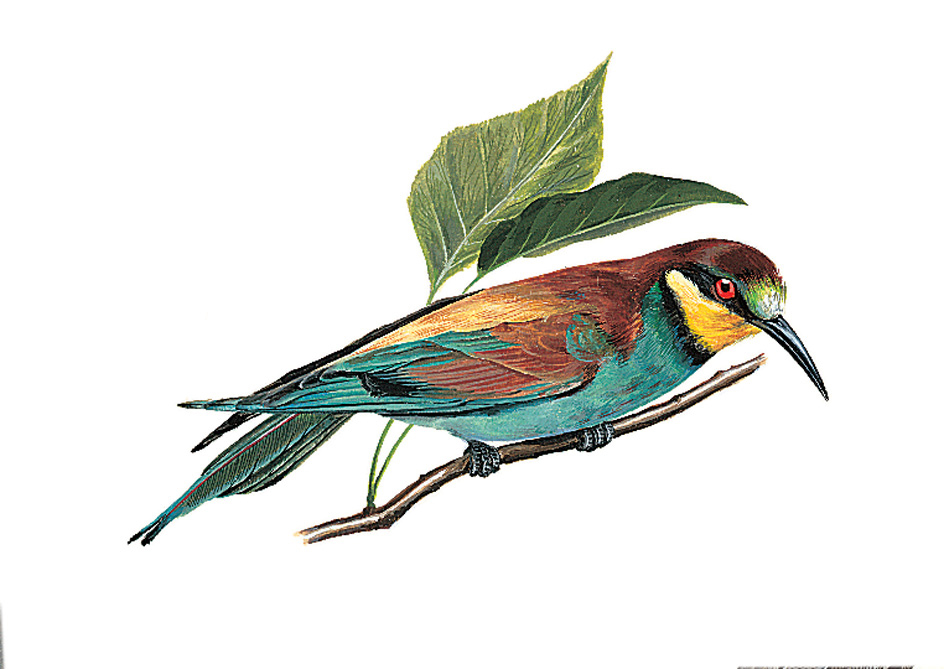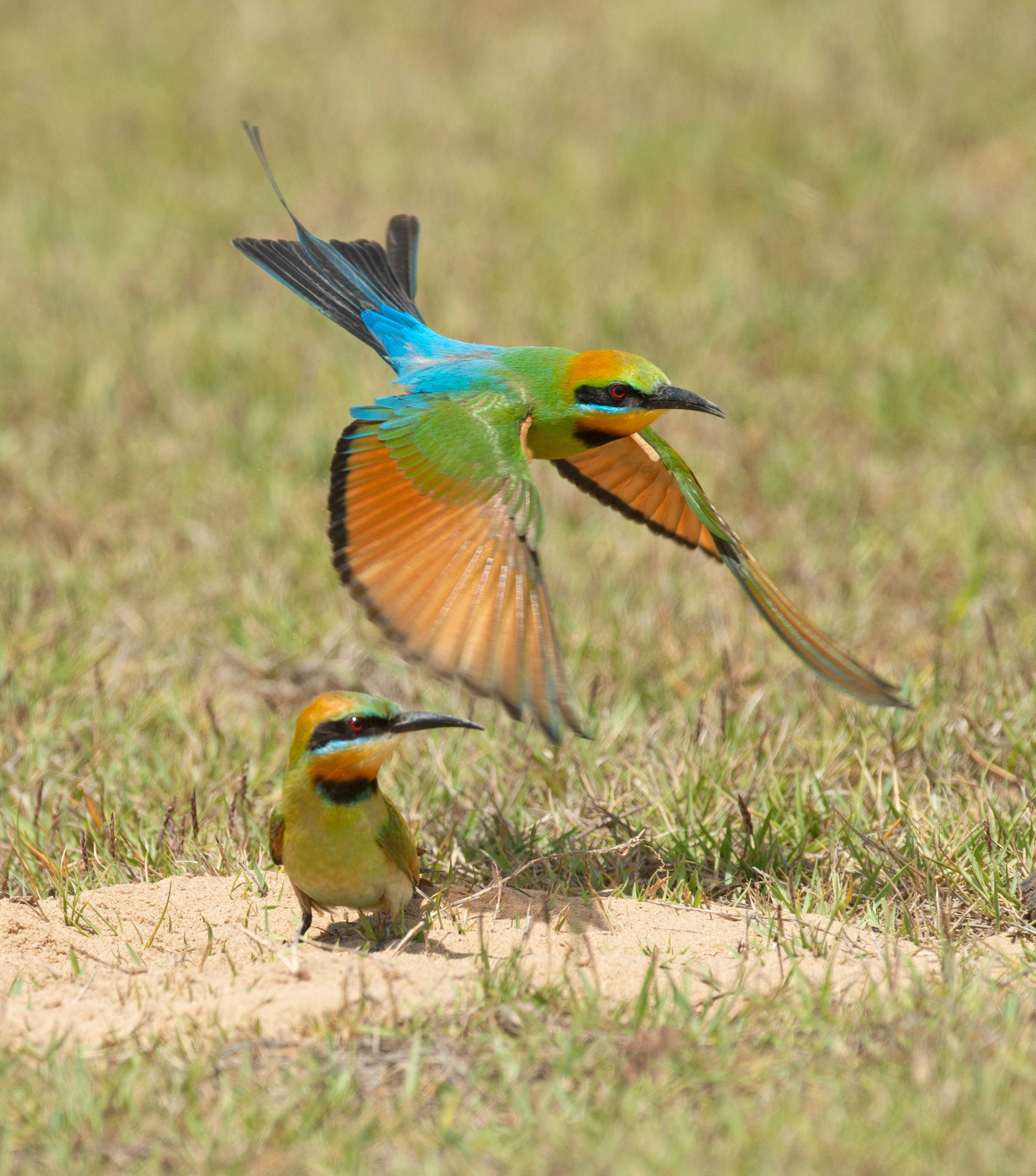Bee-eater is a group of birds that feed chiefly on flying insects, particularly bees and wasps. Bee-eaters live in southern Europe, Africa, Asia, and Australia. There are more than 20 species (kinds).


Bee-eaters measure from about 6 to 12 inches (15 to 30 centimeters) long. They have slim bodies with long pointed wings and long tails. The bill is long, slender, and slightly curved. Bee-eaters have combinations of blue, green, yellow, and red or reddish-brown feathers.
The graceful, swift flight of the bee-eater enables it to capture flying insects. Bee-eaters often circle and glide like swallows while feeding. They also perch on branches, wires, or the backs of grazing animals and dart out after passing insects. Flocks of bee-eaters help control swarms of locusts, which damage crops. But beekeepers view these birds as pests. A single bee-eater can consume several hundred bees a day.
Most bee-eaters inhabit open brushland, plains, reed marshes, or the edge of woodlands. They form flocks of up to several dozen birds. They nest in tunnels, which they dig in sandy river banks or in flat patches of bare ground. The females lay from two to six white eggs.
